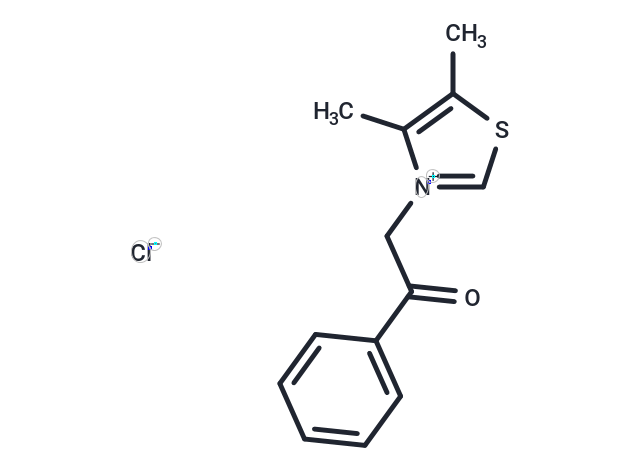Shopping Cart
- Remove All
 Your shopping cart is currently empty
Your shopping cart is currently empty

Alagebrium chloride (ALT711) is an advanced glycation end product (AGE) inhibitor that has proven effective in reducing systolic blood pressure and providing therapeutic benefits for patients with diastolic.

| Pack Size | Price | Availability | Quantity |
|---|---|---|---|
| 100 mg | $31 | In Stock | |
| 500 mg | $63 | In Stock | |
| 1 mL x 10 mM (in DMSO) | $45 | In Stock |
| Description | Alagebrium chloride (ALT711) is an advanced glycation end product (AGE) inhibitor that has proven effective in reducing systolic blood pressure and providing therapeutic benefits for patients with diastolic. |
| In vivo | Alagebrium treatment in diabetic rats significantly inhibits neointimal hyperplasia after carotid balloon injury due to its inhibition of intracellular ROS synthesis, which results in inhibition of RASMCs proliferation[1]. |
| Animal Research | Rat aortic vascular smooth muscle cells (RASMCs) were treated with 1-100 μM of alagebrium added 24 hours before the addition of AGEs.?This in vivo study was done using 8-week-old male rats that were injected intraperitoneally with 80 mg/kg STZ.?Sixteen weeks later, the diabetic rats were treated with 10 mg/kg alagebrium for 4 weeks, after which carotid artery balloon injury was induced.?After 4 weeks, the animals were sacrificed for histological analysis[1]. |
| Alias | ALT711 |
| Molecular Weight | 267.77 |
| Formula | C13H14ClNOS |
| Cas No. | 341028-37-3 |
| Smiles | [Cl-].Cc1sc[n+](CC(=O)c2ccccc2)c1C |
| Relative Density. | no data available |
| Storage | keep away from direct sunlight | Powder: -20°C for 3 years | In solvent: -80°C for 1 year | Shipping with blue ice. | |||||||||||||||||||||||||||||||||||
| Solubility Information | DMSO: 65 mg/mL (242.75 mM), Sonication is recommended. | |||||||||||||||||||||||||||||||||||
Solution Preparation Table | ||||||||||||||||||||||||||||||||||||
DMSO
| ||||||||||||||||||||||||||||||||||||

Copyright © 2015-2025 TargetMol Chemicals Inc. All Rights Reserved.